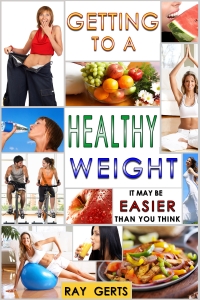As you return to your work after eating lunch, you may wonder: Why am I so sleepy? Whether you use words like drowsiness, sleepiness, tiredness, or fatigue to describe this mid-afternoon lull, why does it occur? Well, it may actually relate to a natural dip in the circadian rhythm.
It is normal to feel a little sleepy after eating lunch. Some people may mistakenly think that it relates to the consumption of food.
In particular, some believe that there is a significant shift in blood flow from the brain to the stomach or gastrointestinal tract to aid in digestion. Although this sounds plausible, it doesn’t really make that much sense. If this were the case, why wouldn’t we feel just as sleepy after eating a large breakfast or after dinner? The truth is that this sleepiness is unrelated to meals and is due to another cause.
Others may argue that there are elements within food that cause sleepiness. For example, there are minuscule levels of the hormone called melatonin. Although melatonin has an important role in the timing of sleep, the low levels within food are unlikely to have any significant effect. There are some other foods that might make you feel a little sleepy, most notably turkey and foods that contain tryptophan. In addition, drinking alcohol may cause drowsiness. In most cases, this is not what contributes to feeling sleepy after lunch, however.
In fact, it has little to do with the food eaten (or that eating has occurred at all). Instead, it has more to do with the natural timing of an increased propensity towards sleep. There are two phenomena that contribute to this: the homeostatic sleep drive and the circadian rhythm. The sleep drive is due to the gradual build-up of a chemical within the brain called adenosine.
The longer that a person stays awake, the more adenosine accumulates, leading to an increased desire for sleep. This reaches its peak right before bedtime, but it is also higher in the afternoon compared to the morning.
The second process that contributes indirectly to sleepiness is the circadian rhythm. The circadian rhythm is actually the pattern of an alerting signal. It increases throughout the day to keep us awake and counteract the increasing levels of adenosine. There is a shoulder or dip in this pattern in the early afternoon, typically 7-9 hours after waking up. When the alerting signal dips, the underlying sleepiness shows itself, and we feel sleepy.
Although feeling drowsy after lunch can be explained, there may be times when we are too sleepy. If we experience sleep deprivation, this after lunch sleepiness can be more pronounced. In addition, sleep disorders such as obstructive sleep apnea may make this worse.
To counteract the sleepiness that occurs in the early afternoon, you can try using caffeine or even take a short 10-20 minute nap.
Fortunately, if you tough it out, this period will pass and you will find that you feel more alert again in a matter of hours.
I will have that trouble on weekends, probably because I eat more for lunch when I'm not working, but when I'm working, I always finish lunch with a cup of coffee or black tea. I find that what I eat will make a difference in my work after lunch. Eat lite and no fatty foods and you might do better after lunch. Yes, eating fatty or fried foods for lunch might be your problem. Try changing to a lite lunch, low-carbs and low-fat and see if there is any difference.
If you really want to lose your body fat than look for my Ebook at the websites listed below. You'll get information on Healthy eating, exercise, and diet.
“How Bad Do You Want To Lose Weight?”, is available at all the online bookstores selling for $1.99. Go to any of the websites and search the title to find my Ebook. This book gives you all you need to lose weight without spending money on gym memberships, diet plans or meal plans. Look for my book. at Amazon.com, B&N.com, iBooks, Kobo.com, Scribd.com, or Gardner Books in the U.K.






